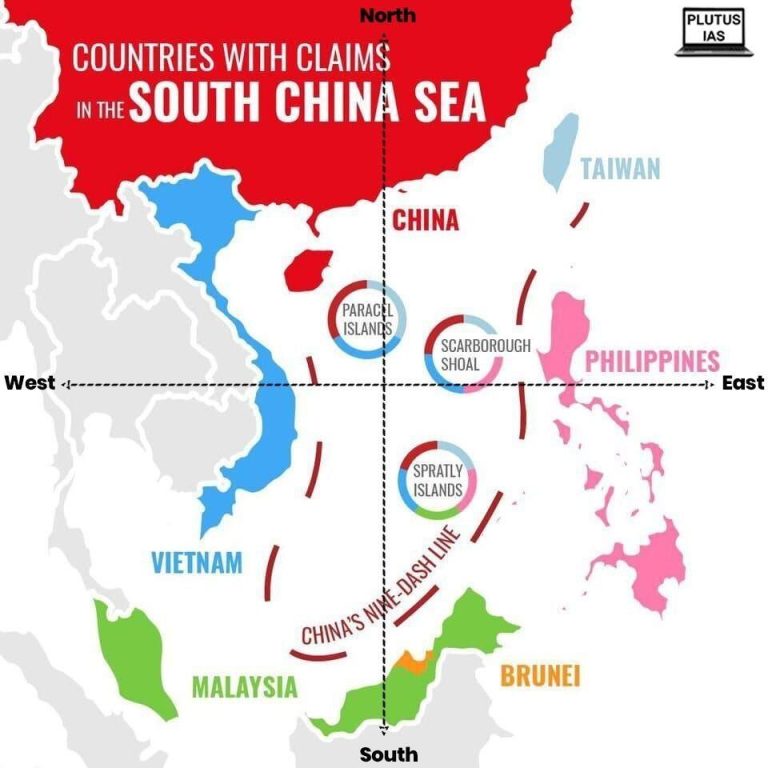Rising tensions in the South China Sea are reverberating far beyond Asia, drawing in major powers, unsettling global markets, and testing the limits of international maritime law. A series of confrontations around disputed reefs and shoals, stepped-up naval and coast guard patrols, and dueling legal claims have raised the risk of miscalculation in one of the world’s busiest sea lanes.
At stake are critical shipping routes, energy security, and the cohesion of regional alliances. Washington and its partners are sharpening coordination as Beijing asserts expansive claims, while Southeast Asian states balance deterrence with diplomacy. Insurers are reassessing risk, supply chains are bracing for disruption, and policymakers are racing to prevent a local flashpoint from triggering wider geopolitical fallout.
Table of Contents
- Beijing Coast Guard Rules and Water Cannon Incidents Raise Collision Risk as ASEAN Stalls on a Binding Code of Conduct
- Global Trade on Edge as Insurers Lift War Risk Premiums and Carriers Reroute via Lombok and the Cape of Good Hope
- What Governments Should Do Now Coordinate Multilateral Patrols Activate Direct Incident Hotlines Sanction Militia Fronts and Fund Maritime Domain Awareness
- In Summary
Beijing Coast Guard Rules and Water Cannon Incidents Raise Collision Risk as ASEAN Stalls on a Binding Code of Conduct
China’s newly implemented coast guard regulations-expanding authority to board, detain, and use force within disputed waters-are sharpening the risk calculus after a string of water-cannon confrontations with Philippine resupply and fisheries boats near Second Thomas and Scarborough Shoals, while ASEAN’s protracted talks on a binding Code of Conduct show little movement, leaving commanders to navigate legal gray zones, jittery radio exchanges, and narrowing sea room. Key implications:
• Higher collision probability as close-in shadowing and ramming deterrence tactics proliferate.
• Legal ambiguity deepens with unilateral enforcement colliding with UNCLOS interpretations and 2016 tribunal findings.
• Operational strain on coast guards and navies managing constant escort, repair, and medical contingencies.
• Commercial exposure via rising war-risk premiums, route deviations, and potential supply-chain delays for energy and electronics.
• External balancing as U.S., Japan, Australia, and European partners expand patrols, exercises, and capacity-building-raising the stakes of any misstep.
• Diplomatic inertia in ASEAN erodes confidence, shifting risk management to rules of engagement and on-scene restraint rather than regional norms.
Global Trade on Edge as Insurers Lift War Risk Premiums and Carriers Reroute via Lombok and the Cape of Good Hope
Marine underwriters have widened high-risk maps across key Asian sea lanes, prompting carriers to accept higher war-risk premiums and push Asia-Europe strings onto contingency tracks through the Lombok Strait and around the Cape of Good Hope, bypassing congested chokepoints and volatile waters; the detours are lengthening schedules, straining bunker budgets, and ricocheting through supply chains as lines file new surcharges, re-time port calls, and tighten stowage plans while shippers brace for volatile freight rates, elongated transit times, and tighter capacity heading into peak shipping windows.
- Transit times: Detours add several days via Lombok and up to two weeks via the Cape, undermining schedule reliability.
- Freight rates and surcharges: Carriers roll out BAF, WRS, and contingency fees; spot rates are trending higher on key east-west lanes.
- Capacity and schedules: Extra steaming time absorbs vessels, triggers blank sailings, and compresses weekly departures.
- Equipment and ports: Container imbalances deepen; transshipment hubs face bunching and yard stress as rotations are redrawn.
- Insurance and contracts: Additional premiums and tighter clauses raise voyage costs; some charters see repricing or re-routing provisions invoked.
- Modal shifts: High-value cargo pivots to air and sea-air, while time-sensitive inventories increase safety stock to hedge delays.
What Governments Should Do Now Coordinate Multilateral Patrols Activate Direct Incident Hotlines Sanction Militia Fronts and Fund Maritime Domain Awareness
With standoffs intensifying and trade routes at risk, capitals need fast, verifiable steps that deter coercion, cut miscalculation, and reassure markets; the focus now is on interoperable actions that can be deployed within weeks and audited in public.
- Coordinated patrols – Launch mixed naval-coast guard missions with shared rules of behavior, AIS and cameras kept on, rotating command, and space for ASEAN, Quad, and EU observers to enhance transparency.
- Direct incident hotlines – Establish 24/7 ship-to-ship and HQ-to-HQ links with standard incident templates, multilingual operators, weekly testing, and after-action summaries shared with neutral monitors.
- Sanction militia fronts – Target the shell firms, financiers, and insurers behind proxy flotillas; deny port services, fuel, spares, and reflagging; align penalties across the U.S., EU, Japan, and regional partners to close evasion gaps.
- Fund maritime domain awareness – Scale coastal radar, AIS receivers, satellite SAR, and data-fusion centers; deploy low-cost sensors to small islands; clean up vessel registries; and provide open alerts for jamming, spoofing, and dangerous maneuvers.
In Summary
As maritime run-ins multiply and rhetoric hardens, the stakes extend well beyond disputed reefs. With a third of global trade transiting the South China Sea, even incremental escalation can reverberate through shipping routes, insurance costs, energy flows and investor confidence. Regional states are recalibrating defense postures, external powers are deepening security ties, and supply chains are testing contingencies-signals that a gray-zone contest is maturing into a structural feature of the Indo-Pacific landscape.
Whether upcoming ASEAN-China code-of-conduct talks gain traction, freedom-of-navigation operations intensify, or new base and access agreements proliferate will determine the next turn. Legal arguments under UNCLOS, coast guard rules of engagement, and the tempo of joint exercises now serve as leading indicators of risk. For markets and governments alike, the question is no longer if the South China Sea will shape global dynamics, but how sharply. The balance between deterrence and dialogue in the months ahead will help decide whether the current ripple becomes a lasting undertow.


